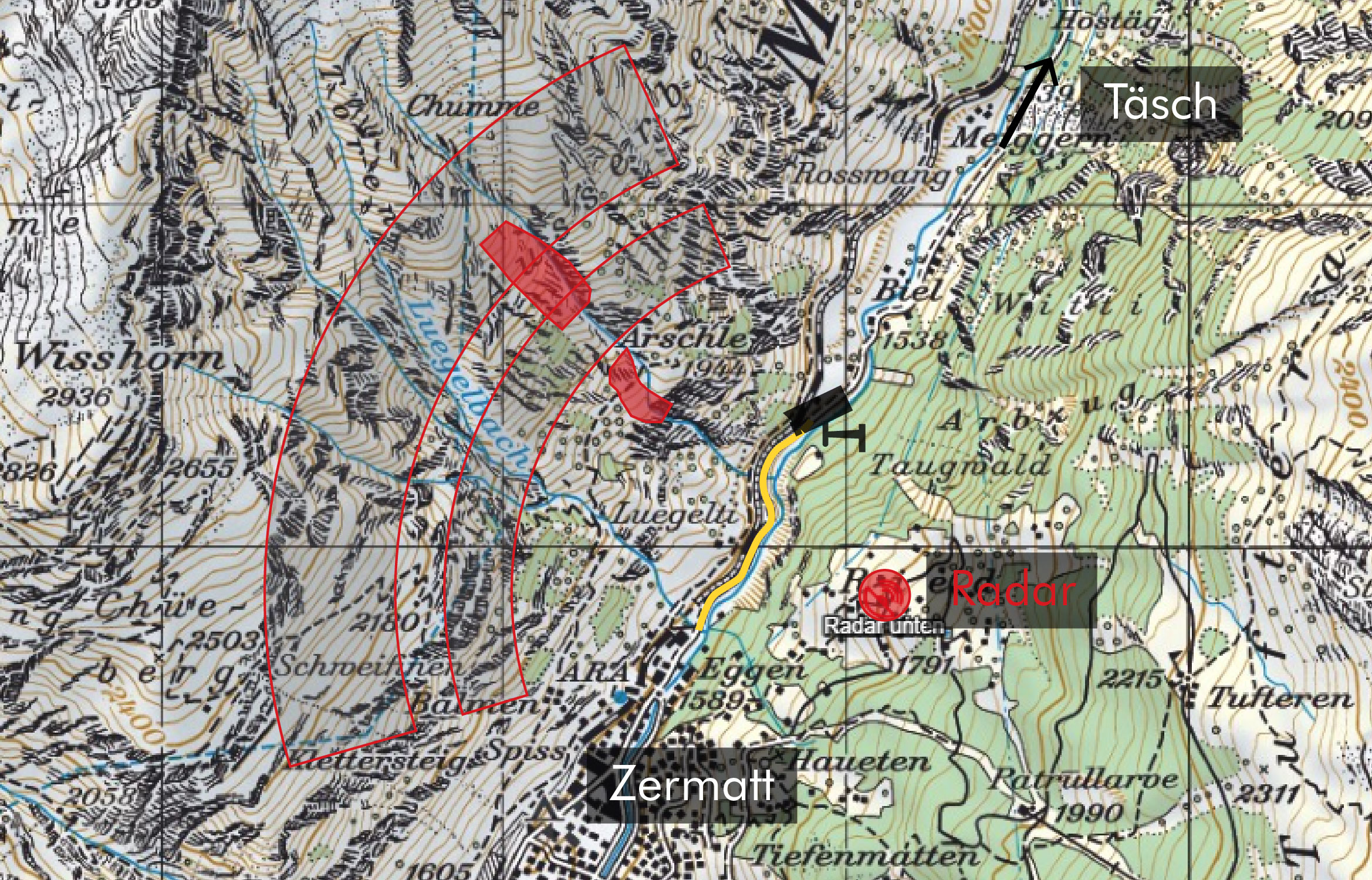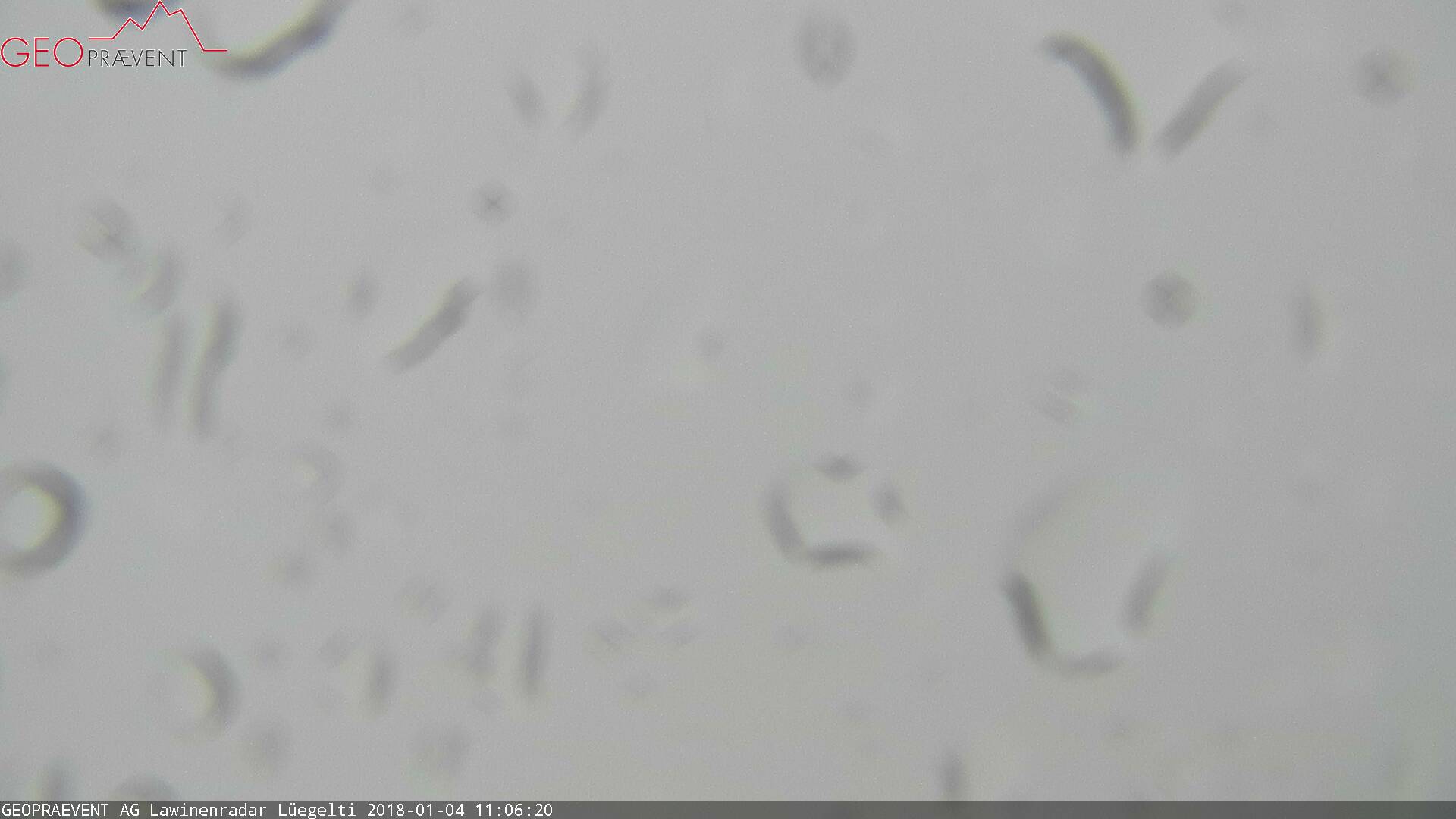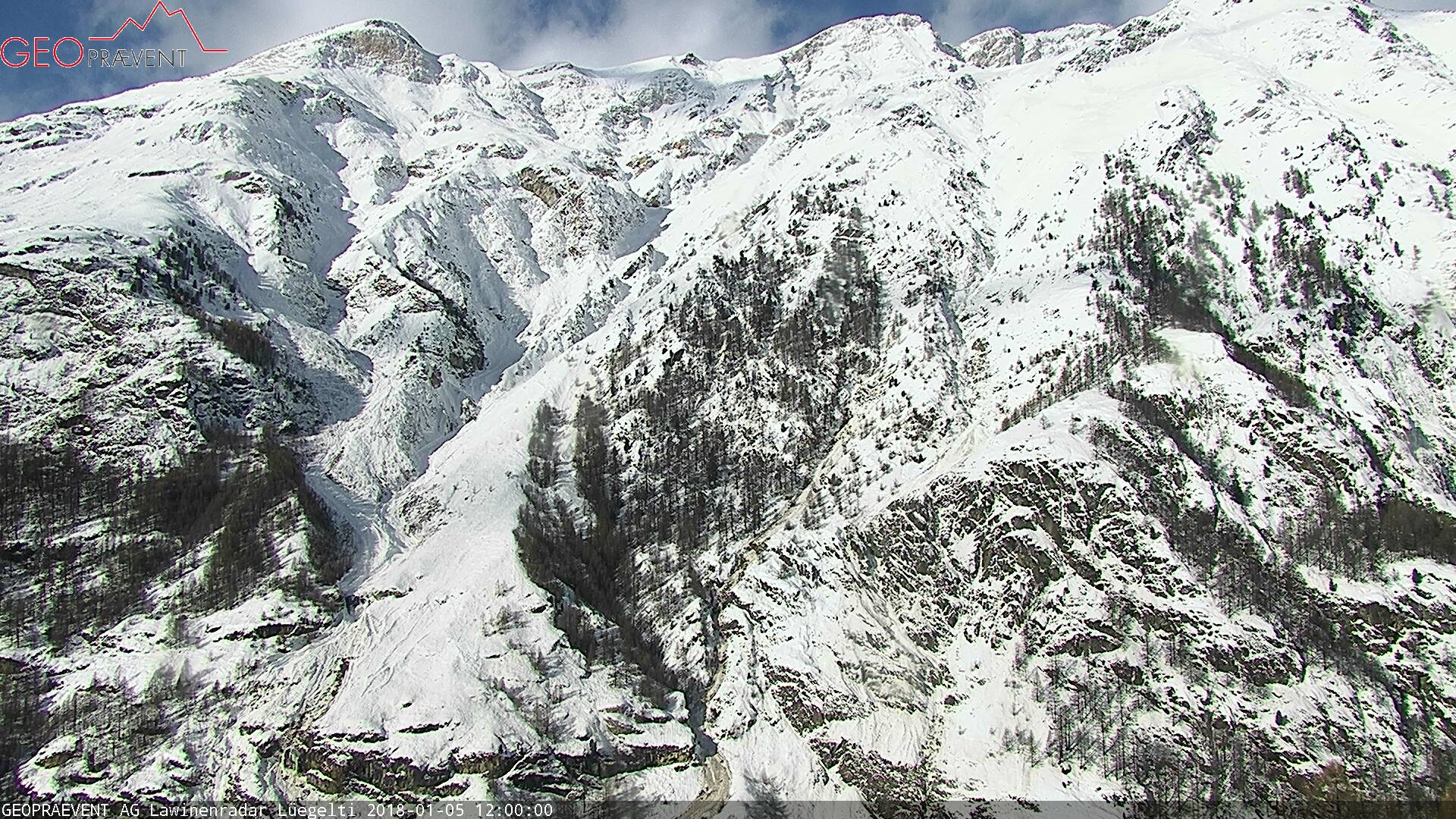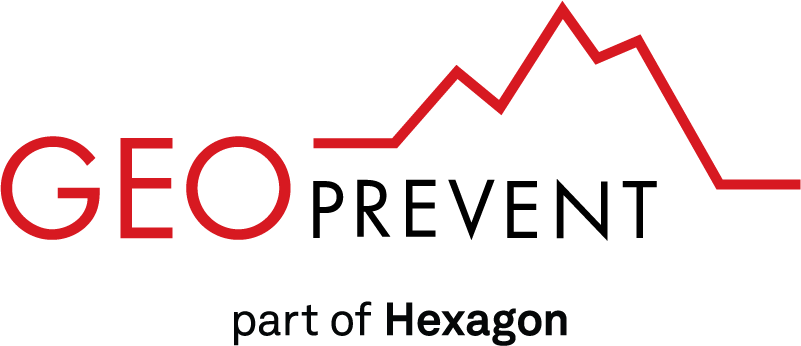More than 40 avalanches in 24 h on the way to Zermatt
On 4 January 2018, our avalanche detection system on the road to the Swiss tourist resort Zermatt counted more than 40 avalanches within 24 hours. Two avalanche radars continuously monitor the highly avalanche prone slopes called Lüegetli and Schusslobina from their counter slope. The avalanche risk increased to “high” after heavy snowfalls and the storm “Burglind” last week. Numerous avalanches occurred spontaneously, many of them large, and reached as far as the road and further. The road had been closed for a while already due to high avalanche danger. Nobody was hurt.
Our radar system correctly detected all avalanches in the monitoring area – at day, at night and in the poor visibility conditions at the time (see below). The avalanche radar system in Zermatt is directly connected to an alarm system that includes traffic lights and barriers. In case the radar detects an avalanche large enough to reach the road, this triggers the alarm and the system automatically closes the road sections at risk. Last week, the road was already closed due to the high avalanche risk and preventative avalanche control works.
Online avalanche mapping
All recorded avalanche data, e.g. avalanche track or velocity, is automatically transmitted to our online data portal where authorized users can access the information any time. The map below shows the track of the large avalanche on 4 January 2018 at 11:06 (video above). The avalanche was detected by the radar at 11:05:54 and then took 53 seconds until its powder cloud reached the road. Several webcams are installed along the road for automatic event recording and remote inspection of the area at safe distance.

Figure 1: Avalanche map with the track of the large avalanche of 4 January 2018, 11:06 AM: Both avalanche radars are located at the counter slope from where they continuously observe the avalanche prone slope. The camera at the end of the road section at risk (yellow) recorded the video above.

Figure 2: Webcam view from the radar location at the time of the avalanche on 4 January 2018, 11:06. The radar also “sees” in poor weather conditions and allows reliable avalanche detection at any time.

Figure 3: Webcam view at the same location the day after (5 January 2017, 12:00 PM).
More about the avalanche detection system in Zermatt here.
Media:
NBC News, 10 January 2018
Global News, 10 January 2018
BBC News, 11 January 2018
